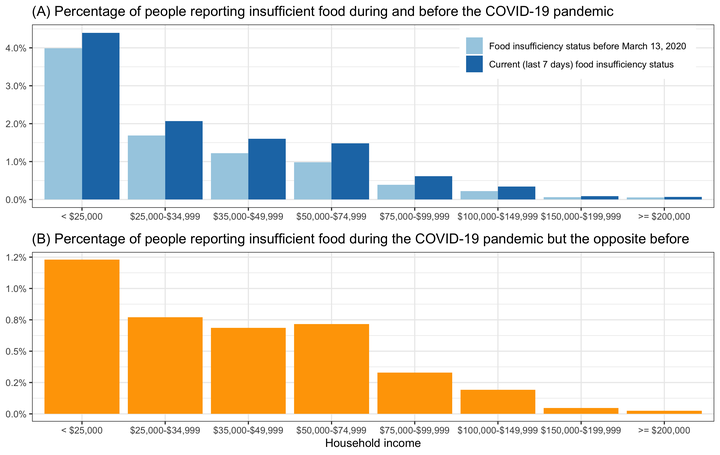The Role of Community Food Services in Reducing U.S. Food Insufficiency in the COVID-19 Pandemic

Abstract
We use state-level Census House Pulse Survey data to examine the role of community food services such as food banks, food pantries, and related aggregators in reducing household food insufficiency during the COVID-19 pandemic in the United States. Descriptive analysis shows that food insufficiency increased for all income classes during the pandemic, especially for the low and middle classes. We adopt a fixed effects filtered estimator that, subject to certain assumptions, provides consistent coefficient estimates for time invariant regressors in a fixed effects panel model. Estimation results suggest community food services did contribute to mitigating food insufficiency, especially for the middle-class and in the early months of the pandemic. Moreover, this effect is generally robust when we include alternative regressors, such as receipt of SNAP benefits or free food from other sources.
We also published an article about this research at the Conversation. Read the article here..